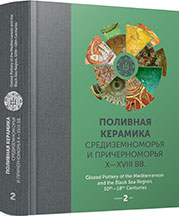Changing Tastes: from Lustreware to Polychrome Tiles. Exported Pottery from Valencia in Mediterranean Area and around (14th to 18th cc.)
Changing Tastes: from Lustreware to Polychrome Tiles. Exported Pottery from Valencia in Mediterranean Area and around (14th to 18th cc.)
Author(s): Jaume Coll Conesa
Subject(s): History, Archaeology, Cultural history, Economic history, Middle Ages, Modern Age, 13th to 14th Centuries, 15th Century, 18th Century
Published by: Издательский дом Stratum, Университет «Высшая антропологическая школа»
Keywords: Valencia; medieval pottery; post-medieval pottery; majolica;distribution;
Summary/Abstract: Medieval ceramics from Paterna and Manises were highly prized and very widely traded in the Mediterranean and Atlantic Europe during the Middle Ages. Although a decline in their presence can be observed in the sixteenth and seventeenth centuries due to the boom in Italian majolica, they continued to be distributed, despite the fact that they now represented old-fashioned styles and tastes. The eighteenth century saw the beginnings of a certain commercial recovery, thanks to tiles from the factories in the city of Valencia. The Royal Factory at Alcora (Castellón), in the north of the Valencian region, played an important part in this revival of taste, and its products came to be widely distributed throughout the Spanish-speaking world. This study presents a general overview of the commercial distribution of Valencian ceramics between the sixteenth and eighteenth centuries based on archaeological and historical evidence.
Book: Поливная керамика Средиземноморья и Причерноморья X—XVIII вв.
- Page Range: 31-50
- Page Count: 20
- Publication Year: 2017
- Language: English
- Content File-PDF

